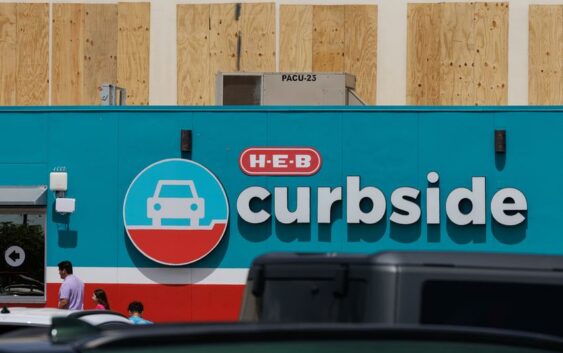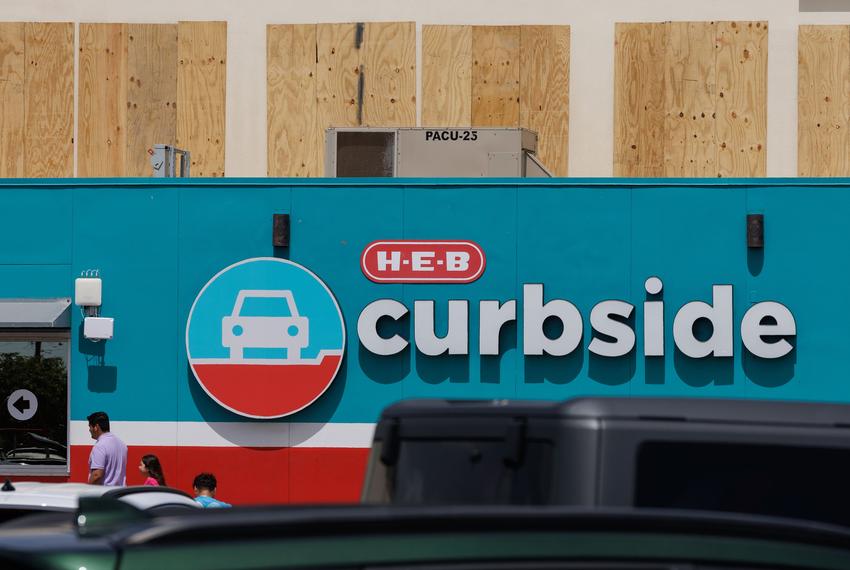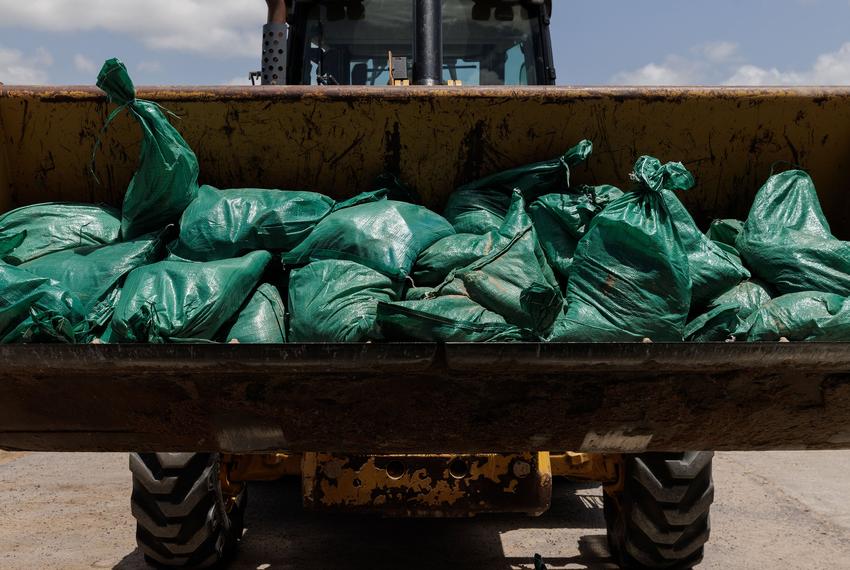- Cold front could trigger severe weather in Houston area this weekend | Timeline for potential storms
- Severe weather possible for Houston this weekend | Weather Impact Alert issued
- Impact Plastics not responsible for workers killed in Helene flooding, TOSHA says
- 'A little emotional': Hurricanes equipment manager got seconds in goal, memory to last a lifetime
- WMO retires three hurricane names after devastating 2024 season
Hurricane Beryl is on a path to hit the Texas coast Monday

Sign up for The Brief, The Texas Tribune’s daily newsletter that keeps readers up to speed on the most essential Texas news.
Texans need to prepare for Hurricane Beryl, which is likely to make landfall on the state’s coast as a Category 1 or 2 storm Monday, state emergency officials said.
The storm is now expected to make landfall on the mid-Texas coast — marking a shift east from where forecasters predicted its path the day before. National Hurricane Center officials are warning of the possibility for hurricane-force winds and life-threatening storm surge across the Texas coast from the southern tip of the state’s Rio Grande stretching east toward Galveston.
Much of the mid- and upper-Texas coast will face a tornado threat starting Sunday. The National Weather Service projects that areas from Corpus Christi, through Victoria and Houston, and over to Beaumont will face risk of tornados.
As Beryl left behind a trail of destruction across Caribbean islands, state officials urged Texans along the entire Gulf coast to pay close attention and prepare for a dangerous storm, particularly people vacationing during the July 4 holiday weekend.
“Everyone along the coast should be paying attention to this storm,” Lt. Gov. Dan Patrick said at a news conference in Austin. Patrick is serving as acting governor as Gov. Greg Abbott travels in Asia on an economic development trip.
Residents should be gassing up their vehicles and making sure they have food and water for themselves and their pets, Texas Division of Emergency Management Chief Nim Kidd said.
“A lot of people are out having fun right now, and that’s a good thing, and we want them to continue to do that, but we also want them to prepare,” Kidd said. “We need a prepared community, not a panicked community.”

Boarded windows at the H-E-B Plus! grocery store in Brownsville on July 5, 2024.
Credit:
Michael Gonzalez for The Texas Tribune
Officials in the Rio Grande Valley and Corpus Christi were distributing thousands of sandbags to help people prepare for potential flooding. But on Saturday, as confidence in the forecast increased, the worst of the damage now appeared like it could spare South Texas. National forecasters in Brownsville did not expect international reservoirs that have been alarmingly low would get any relief.
For the mid-Texas coast, National Weather Service forecasters in Corpus Christi warned residents that winds could be strong enough to damage roofs and mobile homes and snap trees or blow over fences. They warned people to be prepared for power outages and cell service outages.
Tropical storm-level winds would likely arrive Sunday night, according to the National Hurricane Center. Areas from Corpus Christi to Matagorda bay faced the greatest wind threat under the current forecast.
Heavy rain could begin Sunday and last through Tuesday. The National Hurricane Center predicted five to 10 inches to fall along the South Texas coastline, with up to 15 inches in some spots. Forecasters expect rainfall to result in flash and urban flooding in East Texas and along the coast.
Rip currents and high seas starting late Friday will make coastal conditions dangerous.
In the Rio Grande Valley, officials were preparing for possible flooding.
The eastern part of Hidalgo County tends to be hit the hardest during heavy rains, but the county was taking steps to mitigate flooding there, said Ricardo Saldaña, Hidalgo County’s emergency management coordinator. Officials have placed water pumps near flood-prone areas and worked with contractors to prevent flooding at drainage project sites by covering up excavation holes.
Saldaña warned residents to make their own preparations by stocking up on food and water, preparing an emergency kit, and making arrangements with friends and family to relocate if necessary.
With the hurricane’s path shifting east, the lower-Texas coast is under a tropical storm watch. Wind speeds of up to 60 miles per hour are most likely to impact the coasts of Cameron, Willacy, and Kennedy county from Sunday evening to Monday morning. The National Weather service says that flooding in the area is still possible, with the highest chance in poor drainage areas in Cameron County east of IH-69E.

Sandbags at a county facility in Brownsville on July 5, 2024.
Credit:
Michael Gonzalez for The Texas Tribune
Cameron County Judge Eddie Treviño, Jr. recommended that people in recreational vehicles leave county parks.
“If you don’t feel safe, evacuate,” said Tom Hushen, Cameron County’s emergency management coordinator.
If there is flooding, Hushen said they were prepared to mobilize fire trucks and ambulances to help people evacuate. But high winds could pose another threat. Winds of more than 90 miles per hour could cause those vehicles to topple over. In that scenario, county officials would have to deploy larger vehicles like dump trucks.
Hushen said any power outages would prompt the opening of emergency shelters. He also advised residents to tie down any loose items in their yards and to bring in all patio furniture because high winds could turn those objects into projectiles.
“Listen to the warnings,” Hushen advised residents. “Things could change at a moment’s notice.”
Beryl has astounded meteorologists with its strength so early in the summer. Warmer-than-normal ocean temperatures helped Beryl rapidly strengthen into a Category 4 storm in late June — becoming the first recorded Category 4 storm to form in June, according to the National Oceanic and Atmospheric Administration.
Beryl strengthened into a Category 5 and tore across the Caribbean, causing devastation in Grenada and Jamaica. It pushed onto the Yucatan Peninsula early Friday as a Category 2 storm.
“Beryl is so out of place historically given how early in the season it is and how strong it got,” said Houston-based meteorologist Matt Lanza, who helps write a blog on tropical weather called The Eyewall. “Typically you don’t see that sort of thing until August — not the end of June, beginning of July.”
Federal forecasters expect this hurricane season, which began June 1, to be a bad one. They predicted to see 17 to 25 named storms form, which was more than they had ever forecast before a season’s start. They believed four to seven of those would be Category 3 storms or stronger.
Climate change driven by people burning fossil fuels is causing oceans to warm and makes hurricanes more likely to be stronger. Scientists also say climate change may make rapid intensification of storms more likely — as happened with Beryl.
“To look at a satellite on June the 30th or July the 1st and to see a storm of Beryl’s magnitude is almost unbelievable,” said Michael Lowry, a hurricane expert for WPLG TV in Miami.
Dante Motley contributed to this report.
Reporting in the Rio Grande Valley is supported in part by the Methodist Healthcare Ministries of South Texas, Inc.
Just in: Former U.S. Rep. Liz Cheney, R-Wyoming; U.S. Sen. John Fetterman, D-Pennsylvania; and Oklahoma Gov. Kevin Stitt will take the stage at The Texas Tribune Festival, Sept. 5–7 in downtown Austin. Buy tickets today!